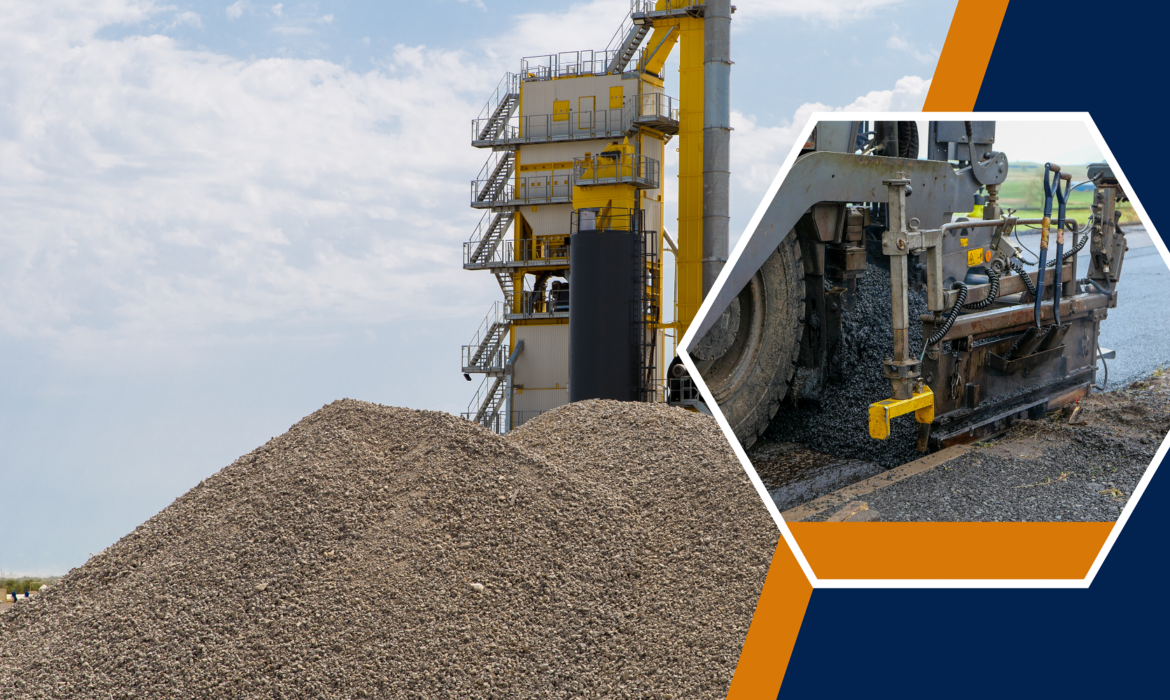Choosing the correct asphalt mix for your project ensures longevity and performance. It can be difficult to choose the right blend with so many alternatives. Do not worry! We will discuss asphalt mix choosing basics and the factors that affect it. We can explain asphalt mixes and tailor them to project needs.
Asphalt Mix Selection Basics
Knowing the basics of asphalt mix choosing is crucial. The first stage is assessing project needs and pavement performance goals. Which blend is best depends on traffic volume, climate, and load-bearing capacity.
Consider aggregate gradation next. Asphalt mixtures contain crushed stone, sand, and other elements of varied sizes and distribution. A well-graded aggregate combination improves stability and durability.
Binder content is also important. Asphalt binders hold aggregates together. Binder type and amount affect flexibility, cracking resistance, and longevity.
Additionally, choosing the right asphalt mix is vital. Hot mix asphalt, warm mix asphalt, and cold mix asphalt are common. Each offers advantages based on construction temperature and resource availability.
From aggregate testing through mixing, quality control must be implemented throughout manufacturing to assure uniformity and industry requirements.
Understanding these essential asphalt mix selection factors can help you make informed selections for your next paving project!
Factors Influencing Asphalt Mix Choice
Choosing the correct asphalt mix for your project involves various criteria. A major factor is climate. Select a mix that can tolerate temperature and precipitation changes because your local weather can dramatically affect asphalt performance.
Also, consider traffic volume. High-traffic areas like highways and busy junctions require an asphalt mix that can withstand tremendous weight and regular use.
The pavement’s intended purpose also affects the asphalt mix. Each project—parking lot, residential street, airport runway—has varied durability and strength needs.
Budget limits may influence your choice. Certain asphalt mixtures may cost more due to their composition or additions. Find a balance between cost-effectiveness and project needs.
Sustainability is becoming more essential in a building. Choose warm-mix asphalt or recovered asphalt pavement (RAP) to cut carbon emissions and conserve resources.
By considering all these aspects, you may choose the ideal asphalt mix for your project. To get the best results, consult paving specialists!

Different Types of Asphalt Mixes
Choose the proper asphalt mix for your project from various alternatives. Each asphalt mix is tailored to specific demands. We’ll examine some construction asphalt mixes here.
Hot Mix Asphalt (HMA) is the most prevalent asphalt mix. It contains aggregate and hot bitumen. HMA is good for highways and parking lots since it is durable and can resist heavy traffic.
Warm Mix Asphalt is very popular. This mix employs additives to combine at lower temperatures than HMA. WMA minimizes industrial emissions and energy use.
Stone Mastic Asphalt (SMA) may be suitable for cracking and rutting-resistant applications. SMA’s polymer-modified binder and high stone aggregate content improve stability and durability.
If noise reduction is important, consider Porous Asphalt. This particular composition has linked voids that drain water and reduce road tire noise.
Recycling asphalt pavements (RAP) reuses asphalt ingredients in new mixtures. RAP can save expenses and perform well when treated and combined with fresh resources.
The optimum asphalt mix for your project relies on traffic volume, climate, budget, and lifespan. An experienced contractor or engineer can help you choose the best alternative for your needs.
Matching Asphalt Mix to Project Needs
Choosing the correct asphalt mix for your project involves various criteria. Each project has distinct needs, so finding the right match is crucial.
Traffic volume matters. Highways and busy intersections need a robust asphalt mix that can handle large loads and regular use. However, low-traffic residential streets may need a simpler mix and be cheaper.
Climate is also crucial. An asphalt mix with strong cracking resistance and thermal stability is ideal for harsh temperatures or repeated freeze-thaw cycles. In warmer locations where high temperatures can cause rutting, a deformation-resistant blend is better.
The pavement’s intended function should also impact your choice. Looking for a parking lot asphalt mix? Or one with excellent airport runway skid resistance? Choosing the proper blend requires considering these needs.
Environmental variables are important too. If sustainability is important to you or rules mandate it, eco-friendly choices with recycled materials meet performance standards.
To choose the correct asphalt mix for your project, consider traffic volume, climate, intended usage, and environmental issues. You may maximize pavement performance and lifetime by considering all these factors during selection.
Remember, each project is unique! So, speaking with industry experts who have selected asphalt mixes for specific projects will help you make informed selections.
Quality Assurance in Asphalt Mix Selection
Quality assurance is essential when picking an asphalt mix for your project. Selecting a high-quality mix can help your pavement last.
Quality assurance includes examining asphalt mix materials. Trustworthy suppliers who deliver consistent materials are essential. This ensures each asphalt batch fulfills the criteria.
Production testing and monitoring are very important. Quality control procedures including sampling, testing, and analysis can discover mixed composition concerns. This allows changes before paving, reducing future issues.
Asphalt mixes must be stored and transported properly to retain quality. Temperature variations and handling contaminants might reduce performance. You can reduce these hazards by following storage and transportation best practices.
Construction quality assurance requires regular inspections. Monitoring compaction, surface smoothness, and layer thickness ensures pavement fulfills design standards.
Taking time to ensure quality throughout asphalt mix selection will result in a resilient surface that can endure traffic and environmental conditions.

Conclusion
Choose the correct asphalt mix for your project to ensure lifespan, durability, and performance. therefore, many elements affect asphalt mix selection, therefore it’s crucial to consider each one.
Assess project needs such as traffic volume, climate, and pavement purpose. These considerations will help you choose the right asphalt mix.
The sorts of asphalt mixes are a hot mix, a warm mix, and a cold mix. Each has advantages and applications based on temperature sensitivity or time restrictions.
Choosing the right asphalt mix for your project is crucial for success. To endure heavy traffic and harsh weather, choose the right blend for a highway or residential driveway.
Quality assurance is crucial to choosing. Pavement performance and lifespan can be greatly improved by working with professional contractors who use high-quality materials and follow industry standards.

